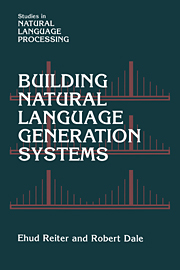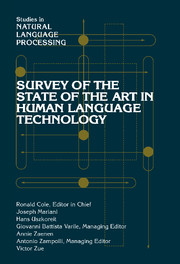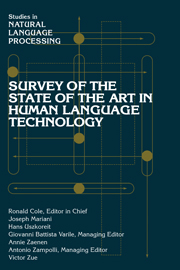Building Natural Language Generation Systems
This book explains how to build Natural Language Generation (NLG) systems--computer software systems that automatically generate understandable texts in English or other human languages. NLG systems use knowledge about language and the application domain to automatically produce documents, reports, explanations, help messages, and other kinds of texts. The book covers the algorithms and representations needed to perform the core tasks of document planning, microplanning, and surface realization, using a case study to show how these components fit together. It is essential reading for researchers interested in NLP, AI, and HCI; and for developers interested in advanced document-creation technology.
- Only book on NLG, other than edited collections or revised Ph.D. theses
- System-building approach, describes engineering as well as theoretical issues
- Case-study shows how different modules fit together
Reviews & endorsements
"Consistent and well-developed...a valuable guide..." General Linguistics
"[A]n indispensable guide...extremely well-organized and well-written." User Modeling and User-Adapted Interaction
"Each topic is clearly presented...the information is very well organized...It is detailed, without being too dense or overloaded with technical jargon...This book should be read by anyone interested in natural language processing who wants to get a better idea of the specifics of NLG." Computing Reviews
Product details
January 2000Hardback
9780521620369
272 pages
237 × 158 × 23 mm
0.52kg
128 b/w illus.
Available
Table of Contents
- Figures
- Preface
- 1. Introduction
- 2. National Language Generation in practice
- 3. The architecture of a Natural Language Generation system
- 4. Document planning
- 5. Microplanning
- 6. Surface realisation
- 7. Beyond text generation
- Appendix
- References
- Index.





